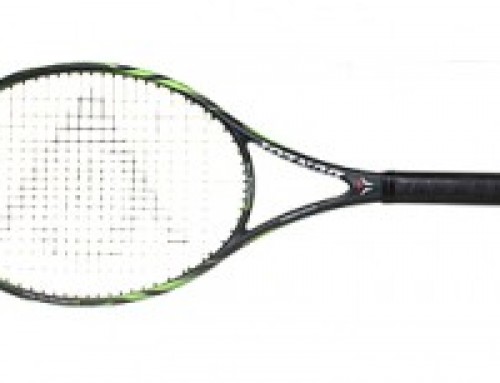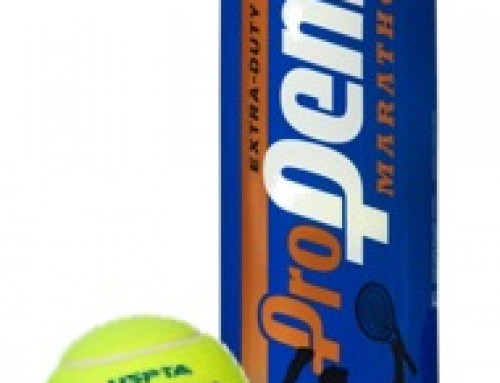 In part 1 of evaluating a string for power level, we discussed some of the physics behind string power levels, and how strings behave throughout a range of impact forces. In part 2, we’ll expand on that information and see how it can be applied to benefit our game.
In part 1 of evaluating a string for power level, we discussed some of the physics behind string power levels, and how strings behave throughout a range of impact forces. In part 2, we’ll expand on that information and see how it can be applied to benefit our game.
When evaluating your own game, the best method of differentiating string needs is by how fast the ball impacts the strings rather than grouping players purely by swing speed, as is the common practice. Impact speed is the combination of how fast we can swing a racquet with good control and repeatability, combined with the ball speeds that are seen in our typical play. This means that someone who swings faster but plays against slower balls will want the same general response from a string as someone who swings slower but plays against faster incoming shots.
Response Deflection Point: What is it?
From Part 1 of this article, the response deflection point is when the string’s elastic response changes so that additional increases in impact speed provide increasingly less and less extra ball rebound speed. This occurs when the overall tension, defined as the combination of initial stringing tension plus the increase in tension as the ball hits and stretches the string, nears the string’s elastic limit.
The importance of the response deflection point is greater for players who are at the point where they have the ability to consistently and cleanly hit balls past their opponents. Players who are not yet at this level typically want a linear response all throughout their swing range, which would happen normally because the lower impact speeds won’t generate sufficient tension increases to near the response deflection point. In these cases, typically a very elastic string like gut or a multifilament string is chosen to maximize power.
How to use the Response Deflection Point
For players with the ability to cleanly hit winners past your opponent, then the response deflection point matters, and there are some general rules of thumb. First, you want want the string’s response deflection point to be just above the level of your fastest controllable and repeatable ball impact speed. This is so you can have a linear response up until you start losing control and timing of the ball impact event. Above that point, you don’t want the ball to spray wildly, but rather give you a more modest increase in rebound speed so you still have feedback about what your swing is doing and also gives you the best chance to keep that ball in the court. When the response deflection point is well above the controlled, repeatable impact speed, you will often hear things like “This racquet is a rocket launcher…” to describe how the ball just flies uncontrollably when the player tries for just a bit extra. When the response deflection point is below the repeatable, controllable impact speed point, players will often complain about a lack of power and a feeling of deadness.
The second rule of thumb is that stringing tension is the way to control where this response deflection point occurs. Stringing looser moves the response deflection point upwards while stringing tighter moves the response deflection point downwards. So if you find that swinging harder doesn’t reap the increase in ball speed you desire, stringing looser will give you more ball speed at the upper end of the impact speeds. If you find that when trying to hit a ball that is going faster than comfortable or trying to swing beyond your repeatable and controllable swing speed that the ball flies on you, a higher stringing tension will bring the response deflection point down and keep the ball speed more in check. This is especially useful for players who are stretching their game by playing against higher level competition or learning to hit the ball harder.
The third rule of thumb is that changing string gauge also changes where the response deflection point lies. If two otherwise identical strings are tensioned identically, the higher gauge (meaning thinner string) will reach the response deflection point sooner. This seems counter-intuitive because we’ve all been told that a thinner string produces more power. In actuality, we are likely fooled by the fact that a thinner string is lighter and makes the racquet swing easier, giving higher ball speeds.
Putting the Response Deflection Point to practical use
Great! But how do we find this response deflection point? Unfortunately, there is no easy way other than experimenting with different strings and tensions. Most players are well suited by using a typical synthetic gut string, strung at the middle of their racquet’s recommended tension range. From there, explore what happens when you start to swing a little harder than what is repeatable and controllable. If the ball flies wildly, the response deflection point is too high. If you get little extra ball speed and don’t miss by a whole lot, then the response deflection point might be a little low. It is an iterative process that might take several different stringings using different gauges and tensions to find where the response deflection point is. However, once you find it, you can use tension and gauge changes to match your game as it grows, and in a future article, we will go into how to switch strings and, by altering tension and gauge, get close to the response you desire without having to again go through a lot of experimentation. This will give you the ability to more easily explore different string materials that might benefit areas of your play.
Lets put this all together. For more advanced, harder hitting players, the response deflection point is one of the considerations in choosing a string that best suits our game. By choosing a string material and tension that puts the response deflection point just above the level of our repeatable and controllable ball impact speed, we can play to and just above our limits with the most power possible while providing for additional control when trying to swing with extra speed or when confronted by balls that are moving faster than we are used to. Tension and gauge are two ways to alter the location of the response deflection point, and can also serve as an indicator that a different string material might be needed.







